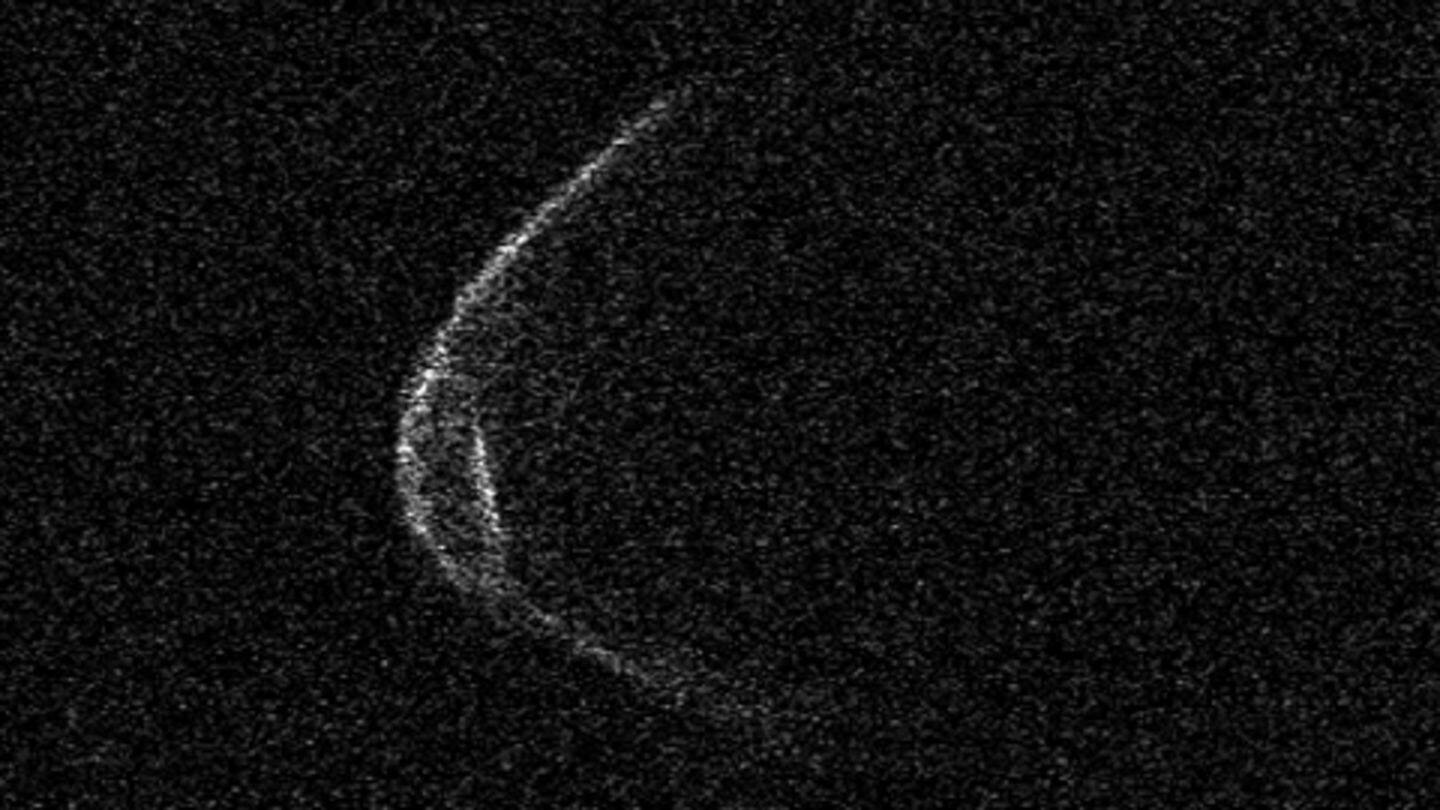
A huge 'mask-wearing' asteroid will zoom past Earth this week
What's the story
In a matter of days, a humongous space rock will zoom past Earth. The body, dubbed Asteroid 52768 (1998 OR2), is said to be the biggest asteroid of the year, but what makes it even more interesting is the fact that it is making the close approach with a 'mask on', just like we all should. Here's all you need to know about it.
Size
Asteroid is large enough to trigger 'global effects'
Discovered in 1998, Asteroid 52768 (1998 OR2) is a potentially hazardous asteroid - a rock capable of making close approaches to Earth, perhaps even colliding with the planet in the distant future. It rotates once every 4.1 hours and is bigger than 140 meters in size, which, scientists say, is large enough to cause 'global effects' in the unfortunate event of an impact.
Upcoming approach
Luckily, it will make a safe pass this month
While the giant asteroid could pose a threat to planet Earth in the future, its upcoming approach will be completely safe. Specifically, on April 29, the rock will zoom past Earth at a distance of 6.2 million kilometers, which is 16 times further away than the Moon. Scientists at NASA and Arecibo observatory are constantly tracking the approach of the rock.
Feature
"Protected with a mask"
Making this case even more interesting is the peculiar shape of the asteroid. According to the imagery released by Arecibo, the asteroid appears as if it is wearing a mask. This led many to joke that the asteroid is aware of the pandemic on Earth and is taking preventive steps despite passing by at a safe distance.
Twitter Post
Here's the asteroid, zipping through space
Wow. Asteroid 1998 OR2 tumbling through space seen by the Arecibo observatory.
— ESA Operations (@esaoperations) April 24, 2020
They confirm the space rock is ~ 2 km in diameter and rotates once every 4.1 hours.
1998 OR2 will safely make a #closeapproach of Earth on 29 April, at its closest being 16 x further than the Moon🌙 pic.twitter.com/Rf7a4eg0gZ
Explanation
Topographic features make this shape
The scientists at Arecibo say that the mask-like appearance can be attributed to the asteroid's topography. "The small-scale topographic features such as hills, ridges on one end of the asteroid are fascinating scientifically," said Anne Virkki, head of Planetary Radar at the observatory. "But since we are all thinking about COVID-19 these features make it look like 1998 OR2 remembered to wear a mask."
Information
In 2079, this asteroid will make a closer pass
The upcoming flyby of the asteroid is its closest pass since being discovered in 1998. However, according to NASA, in 2079, it will come about 3.5 times closer than this time around.